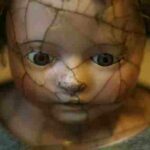Like beauty itself, art is undoubtedly very much in the eye of the beholder.
A couple of years back, a world-renowned Brisbane-born street artist, whose celebrated work is permanently exhibited in the Australian National Gallery and regularly sells for thousands of dollars in the swank art-houses of Sydney and Melbourne, was accused of painting graffiti at various sites around Brisbane. For his sins he was charged by Queensland police with wilful damage of property.
It was alleged the celebrated artist, Anthony Lister, had painted two Fortitude Valley walls, a Paddington skate park, a city fire-hose box, and a steel garage door in Elizabeth Street. In response, the artist gladly admitted he had. But when the charge came before the Magistrates Court in Brisbane, he steadfastly pleaded not guilty to damaging anything. Instead, he told Magistrate Barry Cosgrove the graffiti was “a gift of my creativity” to Brisbane, claiming his intention was to enhance and beautify Brisbane locations, not damage them.
The case threw up some interesting questions about just where art ends, and damage begins. The prosecutor argued wilful damage could include improvements to property, if there was no consent. Since none of Lister’s paintings had been authorised, he told the court, the property had definitely been damaged. But former Brisbane deputy Mayor David Hinchcliffe gave evidence of a contrary view, lauding the artist’s contributions and assuring the magistrate “In terms of street art, he is up there with Banksy.” More about that later.
Notwithstanding such eminent support, the magistrate found Lister guilty but declined to record a conviction, instead ordering the artist to perform five hours of community service with the Council’s Graffiti Removal Service. Ouch!
In an interesting postscript, Anthony Lister reportedly gave Magistrate Cosgrove a signed sketch he had done of him during the hearing, whereupon the magistrate quipped he wasn’t quite sure if he was all that impressed, as it showed he had bigger jowls than he had thought. Beauty, it seems, is in the eye of the beholder.
The curious case of Police versus Lister recently came back to mind with the news of the rather sensational sale, and ultimate destruction, of a priceless art-work by another internationally-renowned artist, known only as Banksy. Earlier this month, the anonymous British street artist, whose works of political and social commentary have mysteriously appeared on streets, bridges and walls in cities throughout the world, sold his celebrated painting Balloon Girl at a Sotheby’s auction in London for more than AUS$2,000,000. But the gavel had no sooner dropped than an alarm sounded inside the picture frame, whereupon the canvas slipped through a mechanical shredder, which reduced it to ribbons.
Wilful damage, or something quite different? Once the initial horror and outrage had duly subsided, one art dealer confidently announced to the Evening Standard “This is now part of art history in its shredded state, and we’d estimate Banksy has added at a minimum 50% to its value.” At least one person buys it, apparently. The successful bidder at the auction has reportedly agreed to go through with the purchase, re-naming the piece Love is in the Bin, while Sotheby’s triumphantly rejoiced “Banksy didn’t destroy an artwork in the auction, he created one.”
Maybe. Or maybe it actually is wilful damage, conveniently overlooked for the sake of commercial expedience. Either way, any wilful damage charge against Banksy would no doubt face far bigger problems than mere esoteric debate on the tension between beautification and obliteration. Since the artist has never appeared publicly, and his true name and identity are entirely unknown, identification could be a serious issue.












